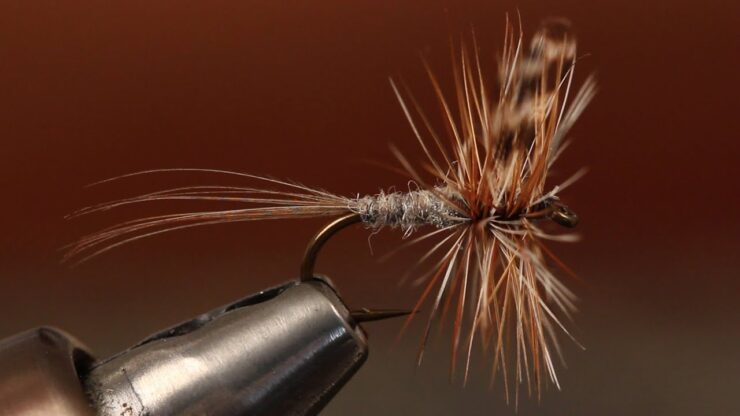The Adams doesn’t need much introduction if you’ve been around fly fishing circles for more than a few minutes. It may well be the most famous pattern ever created.
To quote fly fishing writer Thomas McGuane, the Adams is:
Gray and funky and a great salesman
I think that salesman line really sums up the Adams neatly. It has a near-unique ability to look like everything, all at once. If a trout wants a caddis? Well, the Adams can look like that. A Mayfly? The Adams can imitate that, too. A host of other bugs? Adams, again.
If you took a panel of fly anglers and made them fish with only one pattern for the rest of their lives, I’d bet most of them would pick the Adams. And why wouldn’t they?
It’s probably the least limiting dry fly on the planet.
Table of Contents
ToggleWhat Does The Adams Look Like?
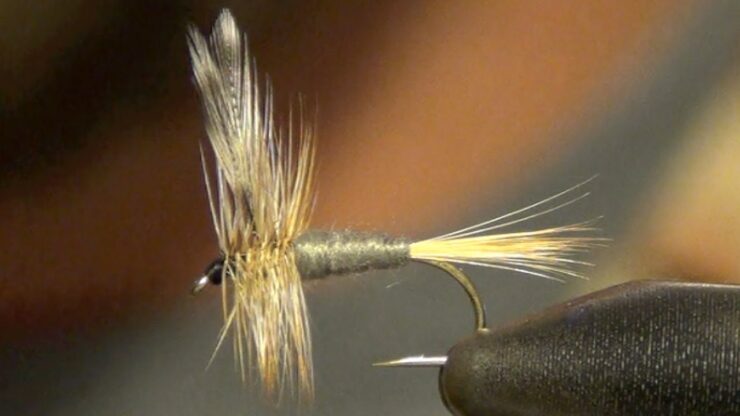
The traditional body of the Adams is grey wool yarn, with rooster-feather wings and a hackle. Most modern variations have a hackle-fiber tail, though the original Adams apparently had two stiffer tails made from Golden Pheasant feathers.
To be honest, it doesn’t have the elegant beauty of a Mickey Finn, a Prince Nymph, or a Royal Coachman. It’s pretty plain-looking.
But flies aren’t tied to be admired. Usually, anyway. I’m suspicious that several less-than-successful patterns were tied for precisely this reason.
They’re tied because they appeal to trout, not people.
And, in the same way, a secret agent wants to blend in and not call attention, no matter the surroundings, the Adams fits in with a dizzying variety of insects, with trout being none the wiser.
Where Did The Adams Come From?
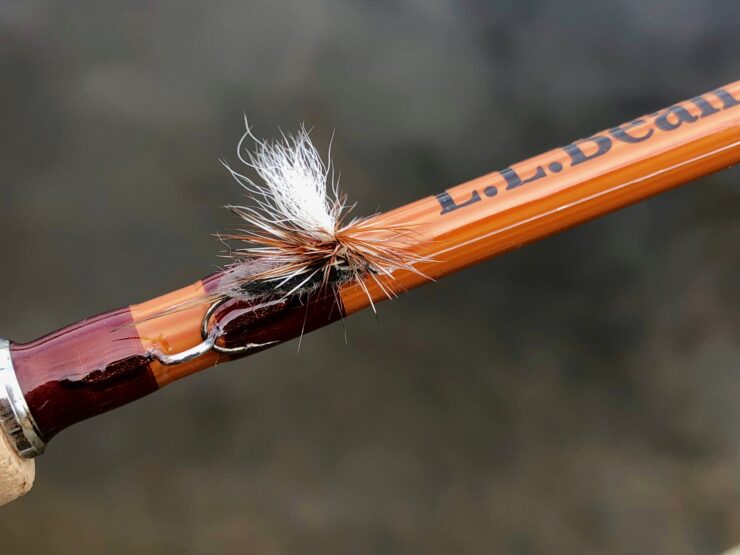
The Adams, born in 1922, is named for Charles F. Adams, an Ohio attorney. The stories say he was fishing a pond near Michigan’s Boardman River and saw an insect that interested him. He retrieved it and brought the bug to local fly-tier Leonard Halladay.
According to Halladay, Adams soon tried the pattern on the Boardman River itself, quickly returning to tell Halladay that it was a “knock-out” and that it should be called the Adams since he had made his first good catch on the fly.
A quick aside: I think Adams comes across like a self-important jerk in that story. By all rights, we should be calling this the Halladay. But I’m picking fights with people who’ve been dead for decades and Halladay didn’t seem to mind, so maybe I should get back on track.
A noted above, Halladay’s original Adams comes down to us nearly unchanged (though apparently, the originals were lumpy, ugly, and less sleek) – the exception being the removal of the pheasant tails in favor of hackle fibers.
Given that Edgar Burke’s fly paintings from Ray Bergman’s 1938 book “Trout” show the Adams without the pheasant tails, we can assume this adaptation occurred relatively early, though some tiers still recommended the twin-tail design into the 1960s.
What Does The Adam Fly Pattern Imitate?
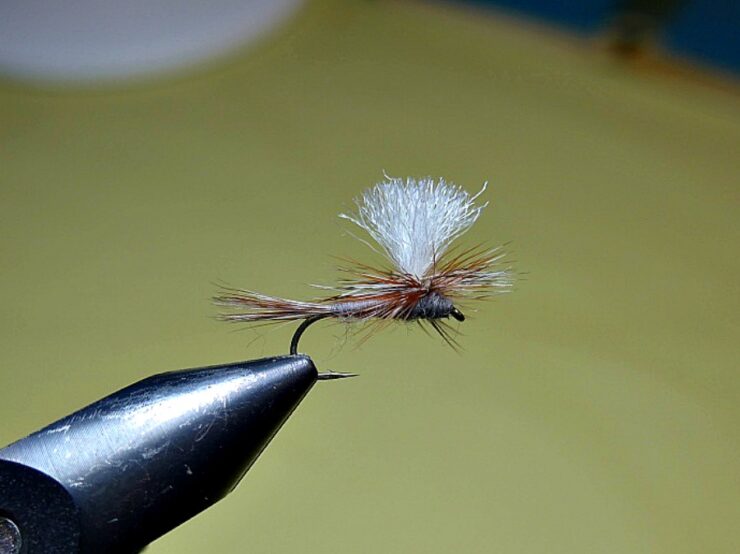
Anything.
That’s the great thing about the Adams. It’s a true imitator pattern – not an attractor – but it successfully imitates so many floating insects that it can be used in virtually any situation.
Charles Adams thought it imitated an ant. Biologist Sid Gordon wrote, in 1955, that the Adams was a solid caddis replica in any region of the United States.
I’ve seen it used to imitate mayflies (and I’ve been told that this was Halladay’s intent, though I can’t verify that). I’ve seen it used to imitate midges, pale morning duns, and a whole slew of other insects and hatches that I couldn’t or never bothered to identify.
When to Fish The Adams
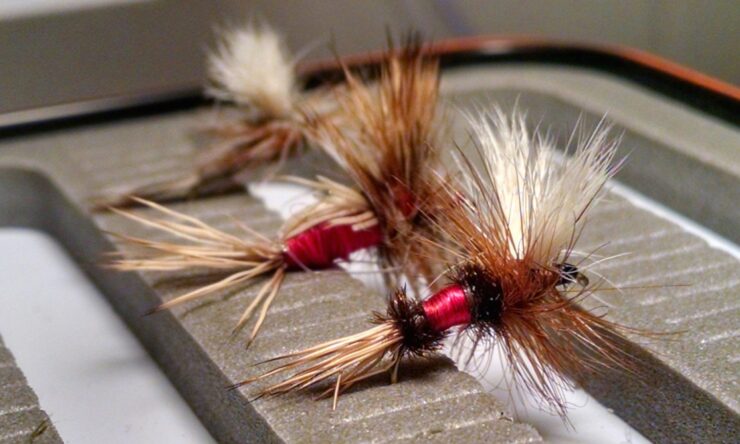
The Adams is a good choice if you’re seeing fish rising and don’t immediately jump to another conclusion, or if you’re confident that fish will take dries but aren’t sure what to throw at them.
I know a lot of anglers that carry a lot of Adams for the same reason that I carry a Leatherman Multi-tool. It may not be the perfect tool for every situation, but why lug around pliers and a knife and screwdrivers when one tool will do the job?
Variations Of The Adams
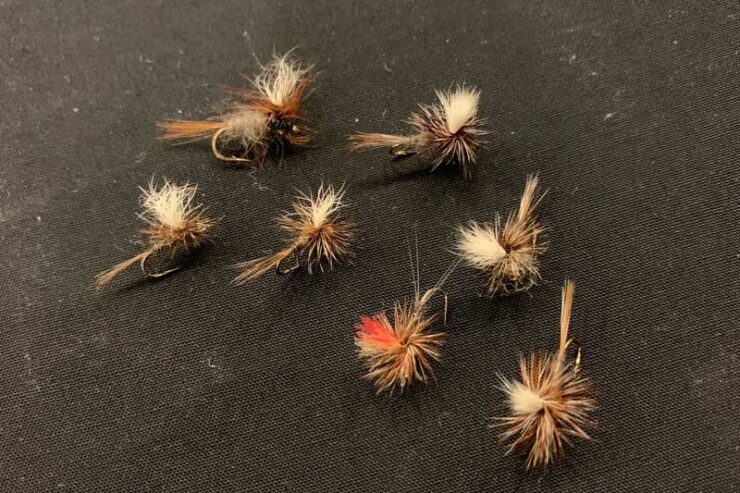
Not surprisingly, given its versatility, the Adams has seen a tremendous number of variations – to the point where it can be difficult to see where the Adams pattern ends, and genuinely new patterns begin.
Based on a very unscientific survey of flies available for retail sale in local fly shops a couple of variations are notable:
The Parachute Adams – in which the hackle is tied around a “parachute” that projects upward from the fly. This lends a significant amount of visibility, without actually changing how the fly looks from below. And,
The Irresistible Adams – in which the yarn body is replaced by spun deer hair to add buoyancy. This one’s probably my favorite. I like the extra buoyancy.
No matter which variation you pick, however, the Adams can be a go-to fly in nearly any dry fly situation.
It’s been a staple of fly fishing for nearly 90 years, and it has earned every accolade that’s been heaped on it.
Adelaide Gentry, a seasoned kayaking enthusiast and expert, is the driving force behind KayakPaddling.net. With over a decade of experience navigating the world’s most challenging waterways, Adelaide combines her passion for adventure with a deep knowledge of kayaking to provide insightful and practical guidance for paddlers of all levels.
Related Posts:
- 16 Best Kayak For Beginners 2024 - Kayaking Adventure Gear
- Heavy Duty Fishing: 11 Best Rods And Reels For Big Fish 2024
- 10 Best Kayaking Dry Bags For Paddlers 2024 -…
- 12 Best Fishing Lures Ever 2024 - Baits That…
- Top 10 Best Marine Switch Panel 2024 - Rocker,…
- 12 Best Beach Wagons & Carts 2024 - For All-Terrain

